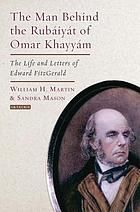Rescuing Omar Khayyam from the Victorians. J. Cole.
Michigan Quarterly Review, 52 (2013) 2, pp. 169-173.
The Rubaiyat or quatrains attributed to the mathematician and astronomer Omar Khayyam (d. circa 1126) of Nishapur were made famous by the loose rendering of Edward Fitzgerald, first published in 1859. Specialists in Persian literature now agonize over how many, if any, of these poems were actually written by Khayyam. For a century after his death he was not renowned as a poet, even to those who knew him and wrote about him. Slightly later sources occasionally attribute one or two, or some as many as thirteen, Persian quatrains to the scientist. The oldest substantial book of them giving him as the author is a 1460 manuscript from Shiraz now held in the Bodleian Library at Oxford (this was a principal source for Fitzgerald). Obviously it is very late, and eighty-two of the poems in it also appear in the divans or poetry collections of other authors.
